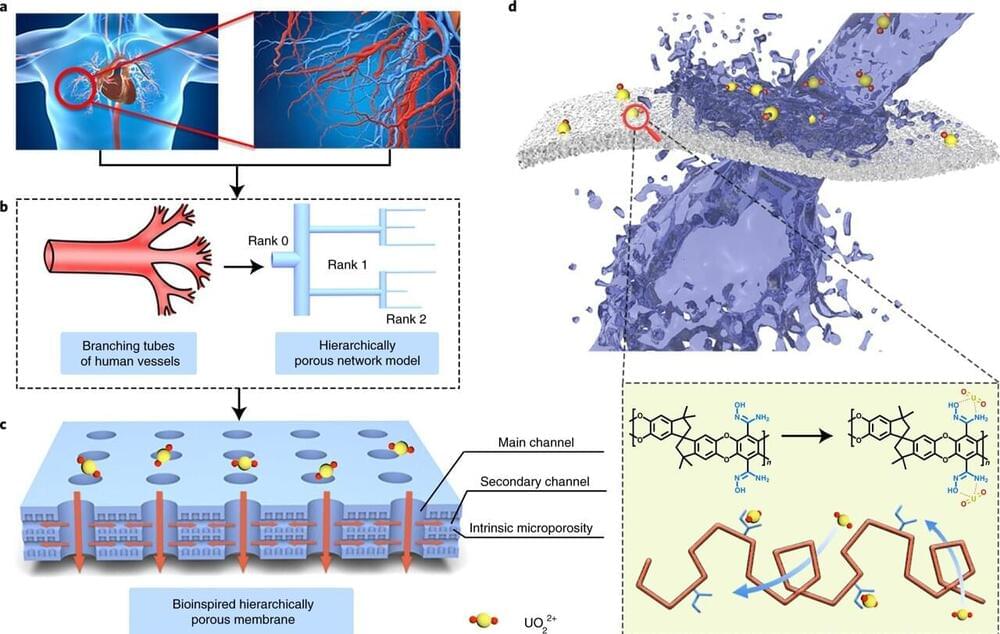Inspired by biological fractals, a team of researchers affiliated with multiple institutions in China has developed a new pore structure for a membrane used to separate uranium from seawater. In their paper published in the journal Nature Sustainability, the group describes their pore structure and how well it worked when tested. Alexander Wiechert and Sotira Yiacoumi with the Georgia Institute of Technology and Costas Tsouris with Oak Ridge National Laboratory, have published a News & Views piece on the work done by the team in China and the work that is left to do before the membrane can be commercialized.
In the 1950s, scientists realized that the world’s oceans held the potential for supplying the uranium needed to produce atomic weapons and electrical power. But it took another 30 years before a viable means of extracting uranium was developed. A team of researchers in Japan developed an amidoxime-grafted adsorbent that appeared able to do the job, but only in a limited way. In this new effort, the researchers have expanded on the work by the Japanese team to create a membrane for use in filtering uranium from seawater.
The membrane created by the team in China is based on a hierarchical pore structure that was modeled on fractals found in nature. Seawater containing uranium enters the outer portion of the membrane through macropores. The molecules in the water then migrate into a branching matrix of smaller channels. From there, they are carried to a microporous inner portion of the membrane where the uranium is absorbed by an amidoxime-grafted adsorbent. Testing showed it capable of extracting 9 mg g−1 from a sample of seawater over four weeks.
